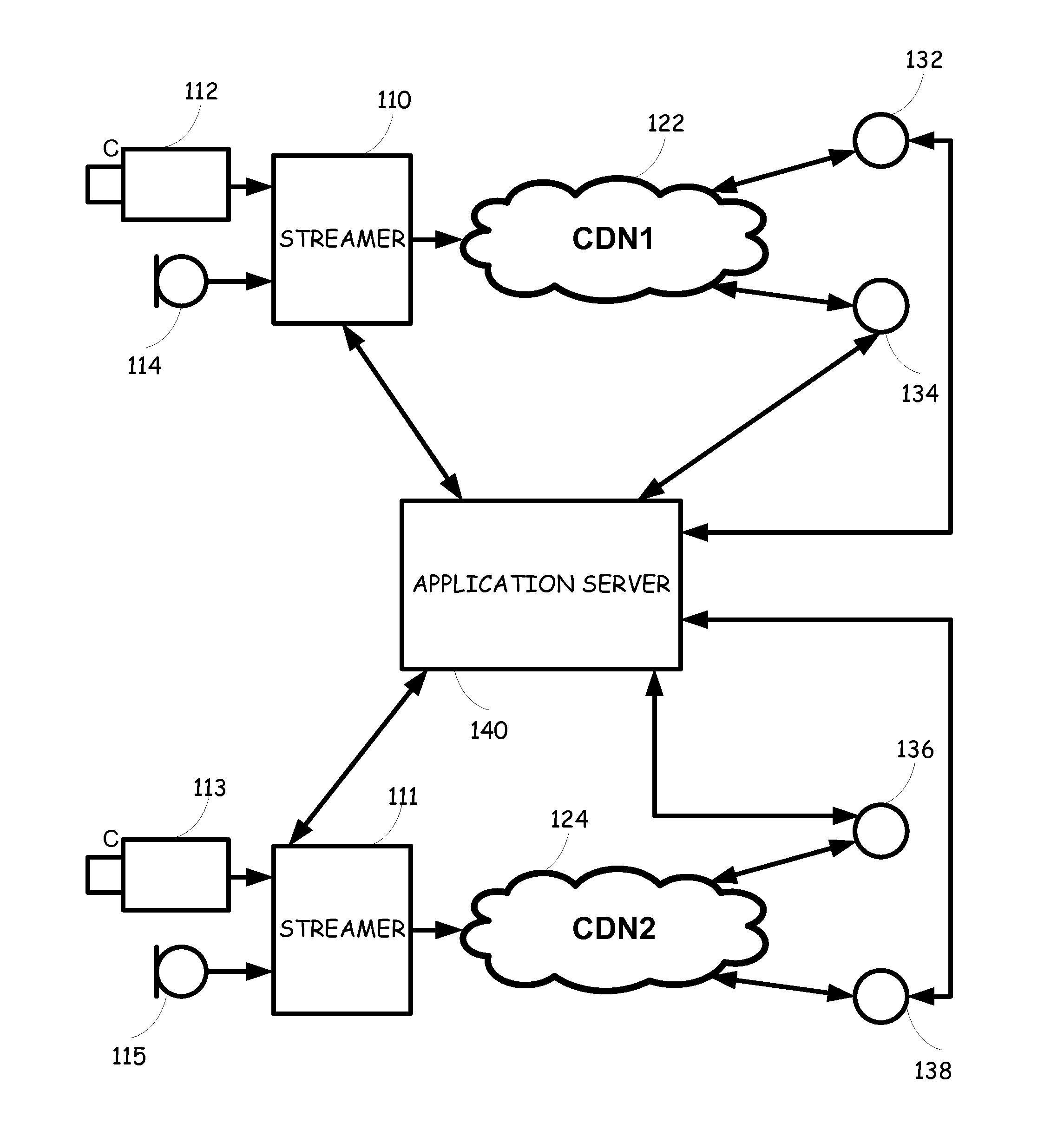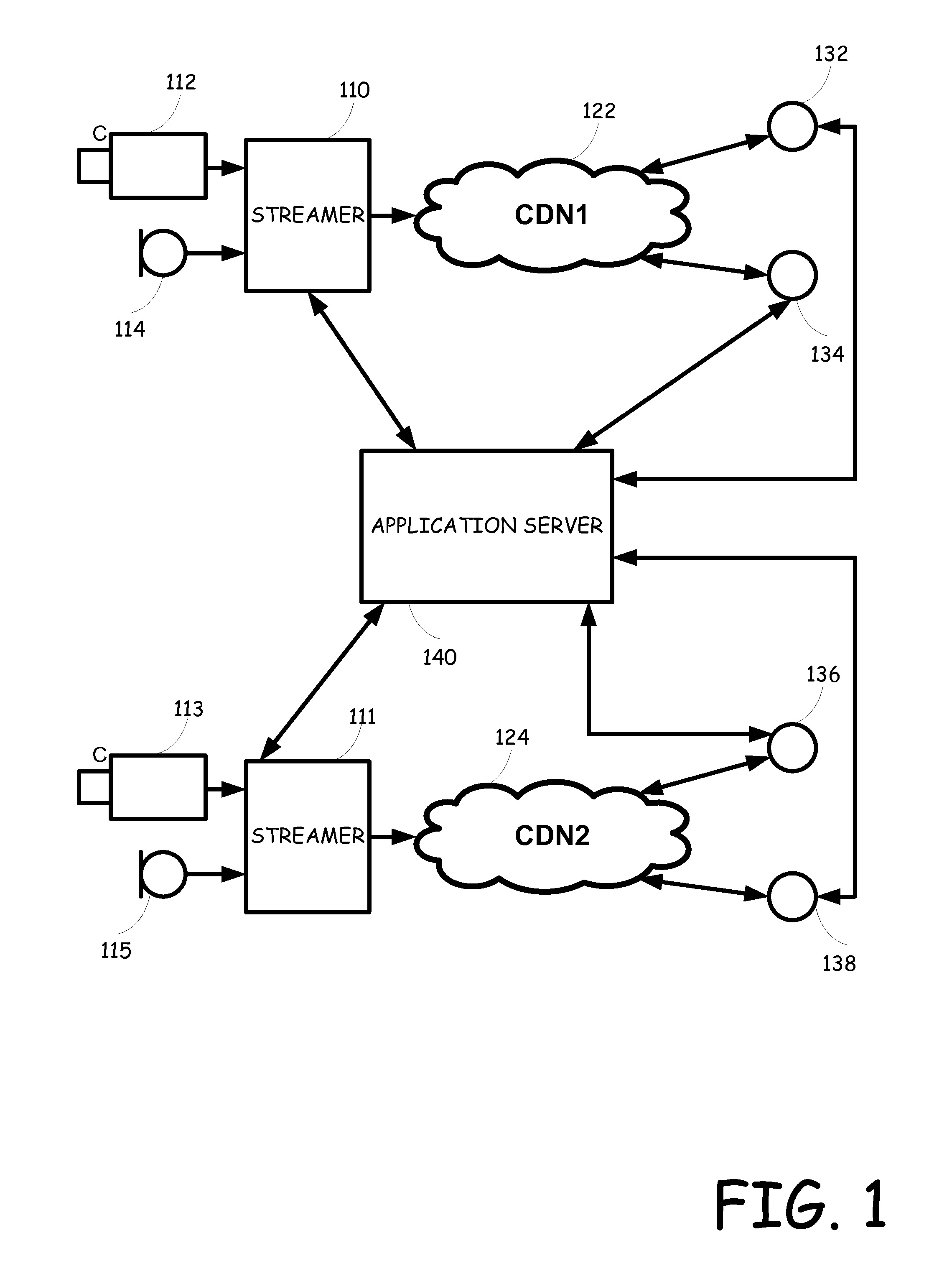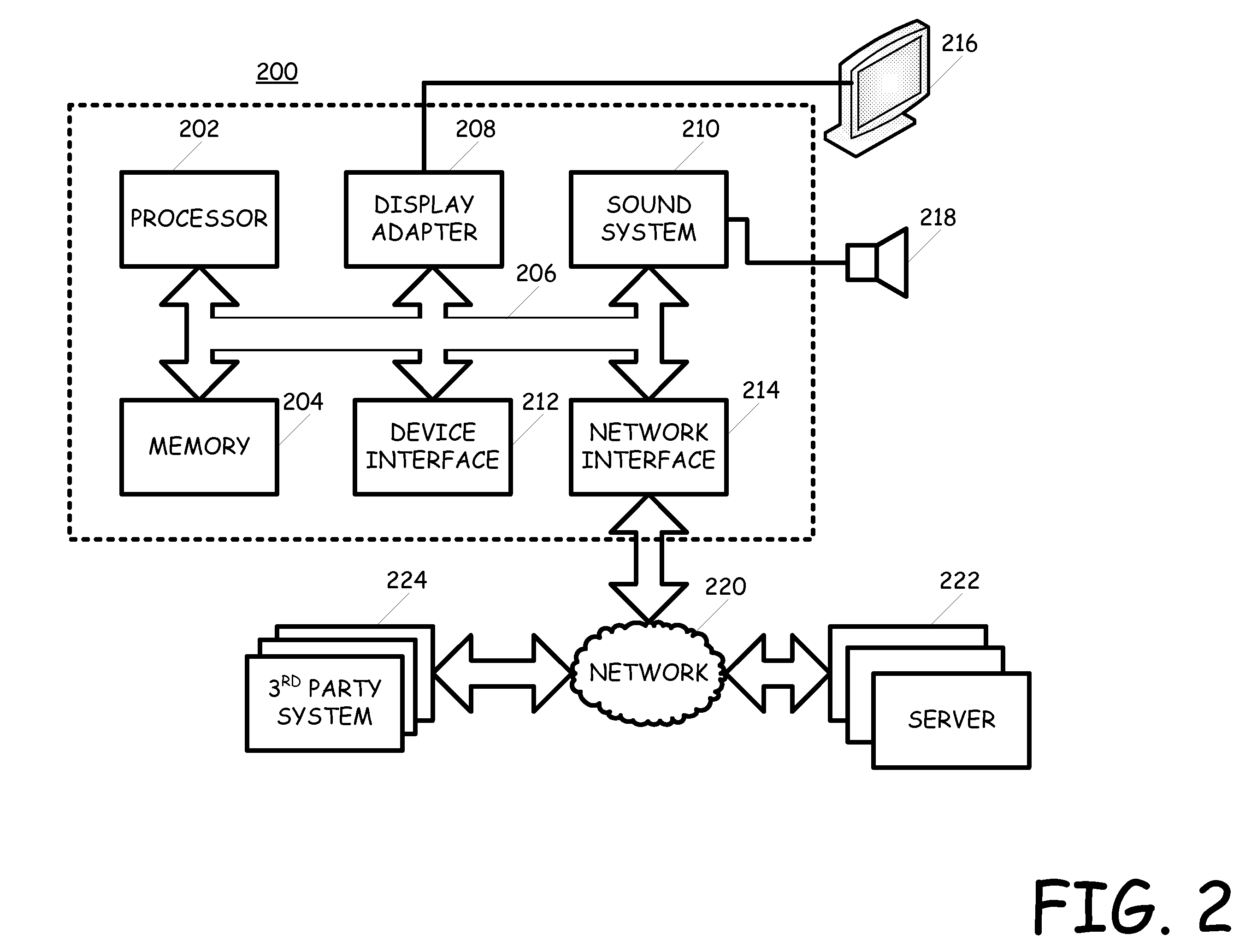Real-time media delivery with automatic catch-up
a technology of automatic catch-up and real-time media, applied in the field of real-time media delivery with automatic catch-up, can solve the problems of reducing affecting the quality of content, so as to reduce the lag time and minimize the lag time
- Summary
- Abstract
- Description
- Claims
- Application Information
AI Technical Summary
Benefits of technology
Problems solved by technology
Method used
Image
Examples
Embodiment Construction
[0056]The present disclosure, as well as features and aspects thereof, is directed towards providing a media player that provides real-time delivery of live media with a catch-up feature to correct for lagging between the live content and the received / rendered content. It should be noted that the term media used throughout this description may refer to video, audio, audio with video, data, or any other combination of these or other media types. A key aspect in the provision of streamed media is the use of buffers to smooth out the media delivery. However, reliance upon buffers also enables the development of lag between the content being rendered and the actual live feed. The present disclosure is directed towards a media player, and a media delivery system that places an emphasis on the delivery of current content in real-time in exchange for the quality of the media delivery. In one embodiment of the media delivery system, a streamer interfaces to media feeds and provides an encod...
PUM
 Login to View More
Login to View More Abstract
Description
Claims
Application Information
 Login to View More
Login to View More - R&D
- Intellectual Property
- Life Sciences
- Materials
- Tech Scout
- Unparalleled Data Quality
- Higher Quality Content
- 60% Fewer Hallucinations
Browse by: Latest US Patents, China's latest patents, Technical Efficacy Thesaurus, Application Domain, Technology Topic, Popular Technical Reports.
© 2025 PatSnap. All rights reserved.Legal|Privacy policy|Modern Slavery Act Transparency Statement|Sitemap|About US| Contact US: help@patsnap.com



